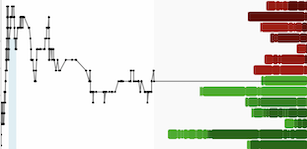An alarming trend is emerging in the U.S. technology sector: the wave of automation, fueled by artificial intelligence, is beginning to significantly reduce IT jobs. This shift is reflected in rising unemployment rates and signals a marked departure from the tech labor market's previous resilience.
The numbers are telling. In May 2025, the unemployment rate among information technology professionals in the United States reached 5.5%. This isn’t a random fluctuation — it marks the second consecutive month of increases and now consistently exceeds the national average. The trend highlights growing challenges in the tech industry. The most affected areas are in telecommunications and services related to reporting, IT systems monitoring, and technical support.

Generative AI and autonomous agents have moved beyond experimentation and are now implemented in real business operations. For years, company executives insisted that AI would complement human workers and boost efficiency. However, market realities are shifting priorities. The major change lies in the mass adoption of autonomous AI agents — systems capable not just of generating text or code, but also of making decisions, managing workflows, analyzing data, and creating reports with minimal human intervention. This autonomy has become a critical factor in replacing human labor.
Those most vulnerable are specialists whose skills are considered obsolete in the AI-driven workplace. These include:
- Writing standard code, especially for simple applications
- Basic system monitoring and responding to predefined incidents
- Preparing template reports (financial, operational, compliance)
- Processing routine tier 1–2 technical support requests
The risk of layoffs is significantly higher in small and medium-sized cities, where regional support offices, call centers, and standardized-function data centers are concentrated. In contrast, major tech hubs such as New York, San Francisco, Seattle, or Dallas — home to R&D centers and strategic roles requiring creativity and high-level decision-making — are less immediately affected, though the risk still looms.
The driving forces behind this trend are rising cost and regulatory pressure. Companies face mounting compliance demands, especially in areas like finance, healthcare, and data protection, but are reluctant to expand headcount for these resource-intensive tasks. AI is becoming the go-to solution for automating compliance: monitoring transactions, detecting anomalies, generating mandatory reports, and auditing logs. This enables companies to achieve significant savings.
Replacing “white-collar” IT specialists, middle managers, and analysts with AI systems carries a broader economic risks. This segment of the workforce has traditionally formed the backbone of the middle class — a group critical to consumer spending. Widespread layoffs could lead to reduced consumption, lower revenues, increased inequality, and, if unchecked, could even trigger for recession.
So far, this hasn’t shocked the entire market, but the fundamental shift is impossible to ignore. In the future, even such “technological” derivatives like ES futures may begin reacting more sharply to news about job losses in the IT sector and their impact on corporate profits and consumer activity, not just monetary policy from the Fed.
The IT labor market isn’t disappearing — it’s s evolving. Most new job growth in the United States is concentrated in developing, training, optimizing, and implementing large language models and AI platforms.
The increase in IT unemployment in is not a temporary anomaly, but a consequence of a fundamental technological transformation driven by economic pressures and AI autonomy. While companies may enjoy short-term margin improvements by replacing routine roles with AI, investors should carefully assess these gains against the long-term social and macroeconomic risks.
Continuous upskilling is no longer optional. IT professionals must pivot toward competencies that complement AI — such as creativity, critical thinking, complex project management, AI ethics— or toward domains less vulnerable to automation, like blockchain or advanced quantitative systems. Adaptability is the new key to survival in the rapidly changing technological labor market.



